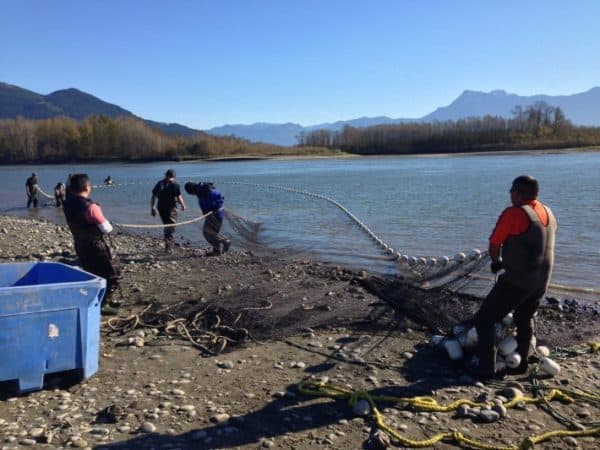Coastal Indigenous peoples eat 15 times more fish than non-Indigenous, study

 Do Indigenous peoples eat more fish than Non-Indigenous peoples?
Do Indigenous peoples eat more fish than Non-Indigenous peoples?
A new study by the University of British Columbia finds that on average coastal Indigenous people eat 15 times more seafood per person than non-Indigenous people from the same country, a result which speaks to the vital cultural connection Indigenous groups have with fishing, say the study’s authors.
“The importance of the ocean for coastal Indigenous peoples goes way beyond seafood consumption, even though it’s often the main part of their diets,” says Yoshitaka Ota, study co-author from UBC’s Institute for the Oceans and Fisheries in Vancouver, BC. “For a lot of these communities, the practice of fishing forms a link to their culture that defines them as a people. It’s not just about eating fish, it’s about maintaining an identity as a distinct culture.”
The first of its kind on a global scale, the study looked at data from over 1,900 coastal Indigenous communities around the world, representing 27 million people from 87 different countries. The results showed that coastal Indigenous groups consume 2.1 million metric tonnes of seafood yearly, representing two per cent of the annual global commercial fish catch.
“Coastal Indigenous peoples rely on ocean resources and are highly vulnerable to ecosystem and economic change,” say the study’s authors, whose work appears in the journal Plos One. “Marine resources are crucial to the continued existence of coastal Indigenous peoples, and their needs must be explicitly incorporated into management policies.”
The new results will go a long way towards helping policymakers around the world to gauge the impact of commercial fishing on indigenous communities, an issue that has become critical in recent years as more and more fish stocks are being diminished by large-scale commercial fisheries. “These big industrial fisheries are chasing the fish. In West Africa, larger vessels are moving closer and closer to shore,” said Andrés Cisneros-Montemayor, study co-author and UBC researcher, in conversation with the Washington Post. “A lot of these indigenous communities, all they have are dugout canoes.”
The consequence, says Cisneros-Montemayor, is a change in eating habits and lifestyle, which puts Indigenous peoples at risk for health problems. “What you’ve seen is as people have less access to their traditional fishing ground,” says Cisneros-Montemayor, “people have turned to eating more food in the stores. People are wondering about the effects on their health. There’s an elevation in cases of diabetes.”
The strength of coastal fishing industries is currently on the Canadian government’s radar, as Prime Minister Justin Trudeau recently unveiled a $1.5 billion ocean protection plan, aimed at creating a marine safety system to respond to tanker and fuel spills in the Pacific, Atlantic and Arctic oceans. Described by Trudeau as “the most significant investment ever made to protect our oceans and coastlines,” the five-year investment will involve increased coast guard monitoring, stricter rules for polluters, research into oil spill clean-up technologies and resources for Indigenous community response teams.
The announcement was welcomed by the First Nations Fisheries Council of BC, who call the plan a “good first step” towards providing protections for coastal communities. “There is no question that additional resources are needed to protect coastal First Nations and ecosystems from the risks posed by existing marine traffic volumes,” says the FNFC in a statement. “High profile marine accidents over the past several years have made this abundantly clear.”

